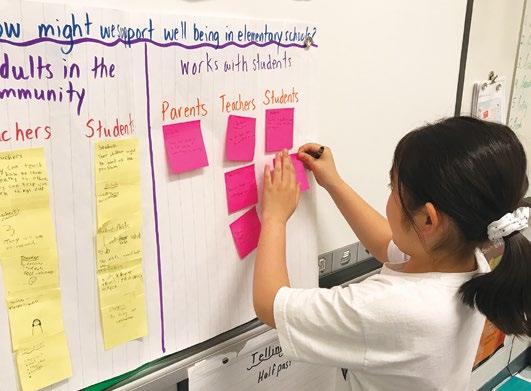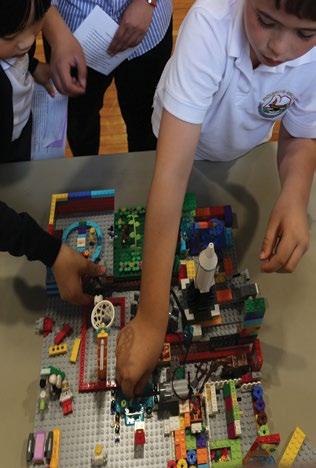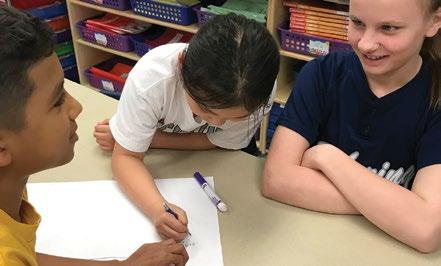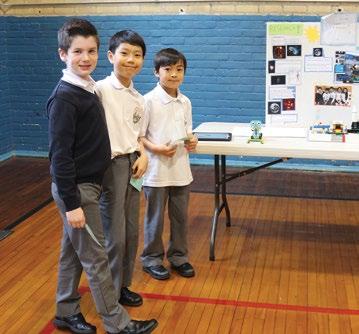
2 minute read
Innovative thinking paves the way for students to be flexible and adaptable

At Pickering College, building the foundation for innovative thinking begins with our youngest learners. In the classroom, faculty ensure the lessons have the flexibility to reach all students so that they are engaged and excited to learn.
Advertisement
“Education is constantly changing and, as teachers, we are continuously finding new instructional strategies that support student thinking, asking questions and risk taking,” explains Sarah Demarco, Grade 3 teacher. “It is important for our students to learn to be innovative thinkers because the world we live in changes quickly in a short period of time and our students need to be flexible and adaptable.”
I-Think Tools
One of the ways the faculty is supporting this approach to learning is by introducing an integrative thinking approach to problem solving. Students in Grades 3 to Grade 5 have begun using a wealth of I-Think tools including using the Ladder of Inference, Causal Modelling and Positive Problem Solving with a Pro-Pro Chart. Demarco says she finds that integrative thinking really helps teachers to facilitate student learning and readies them to take on larger more complicated challenges, such as their participation in Rotman School of Management’s I-Think Challenge 2019.
Students in Grade 3 and Grade 6 are acting as consultants to the Peacebuilders’ Restorative Schools programs. The students have been asked: How might we support a culture of wellbeing at elementary schools? Students need to consider whether to build capacity with adults or students in the school community and whether to build capacity within each school or for Peacebuilders to be available as experts when conflict happens.
“As a result, for this challenge we have been exploring themes of wellbeing, conflict, community and belonging,” Demarco explains. “It’s really interesting to hear the students’ perspectives as they explain their thinking.”

“The kids know the problem better, because sometimes kids can’t really explain the problem to the adults but they can explain it to their classmates,” says Surena Zadhoush, Grade 3. Using a tool like the Pro-Pro Chart Zadhoush says “you can focus on the one subject and whatever comes to your mind you just write it down.”

Innovative thinking also is incorporated into the math curriculum in Junior School, exposing students to real-world problems that require collaboration and flexibility in their thinking.
Students in Grades 1-5 participate in the First LEGO League and First LEGO League Junior programs that focus on building interest in science, technology, engineering and math (STEM) through a real-world challenge.

“Our students need to be researchers, designers, and engineers all while collaborating in teams and using their critical-thinking skills and imagination,” says Demarco.






